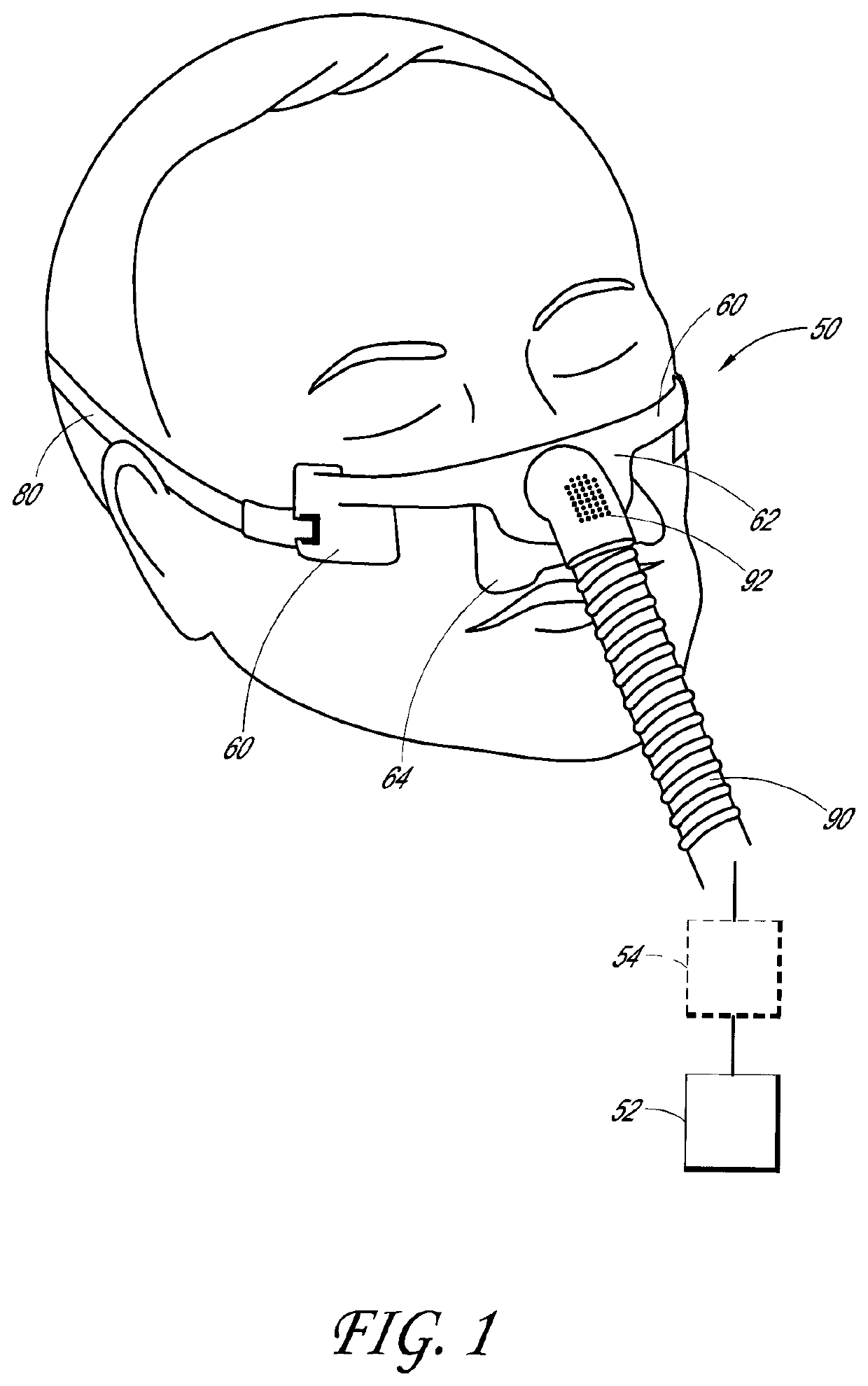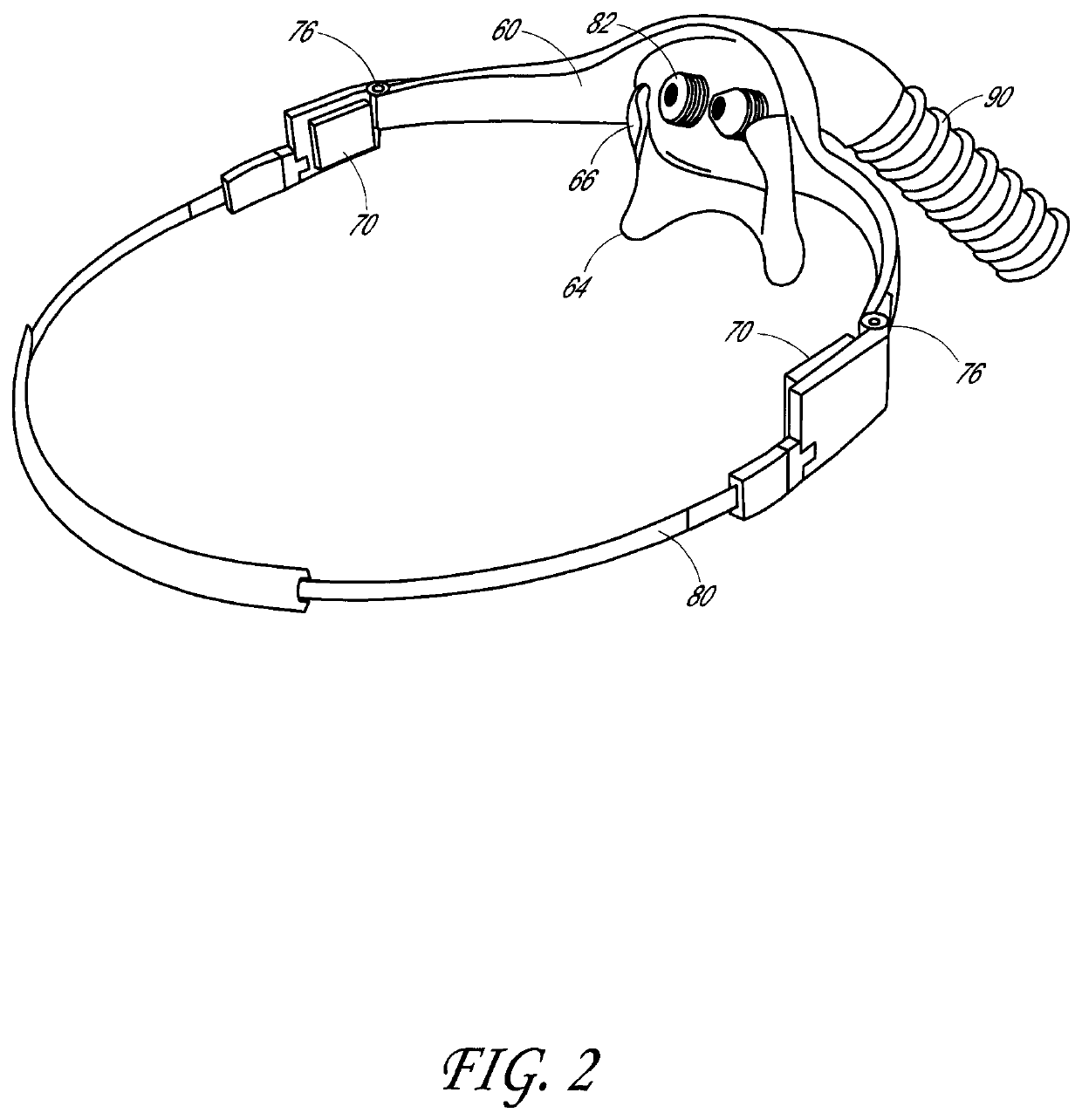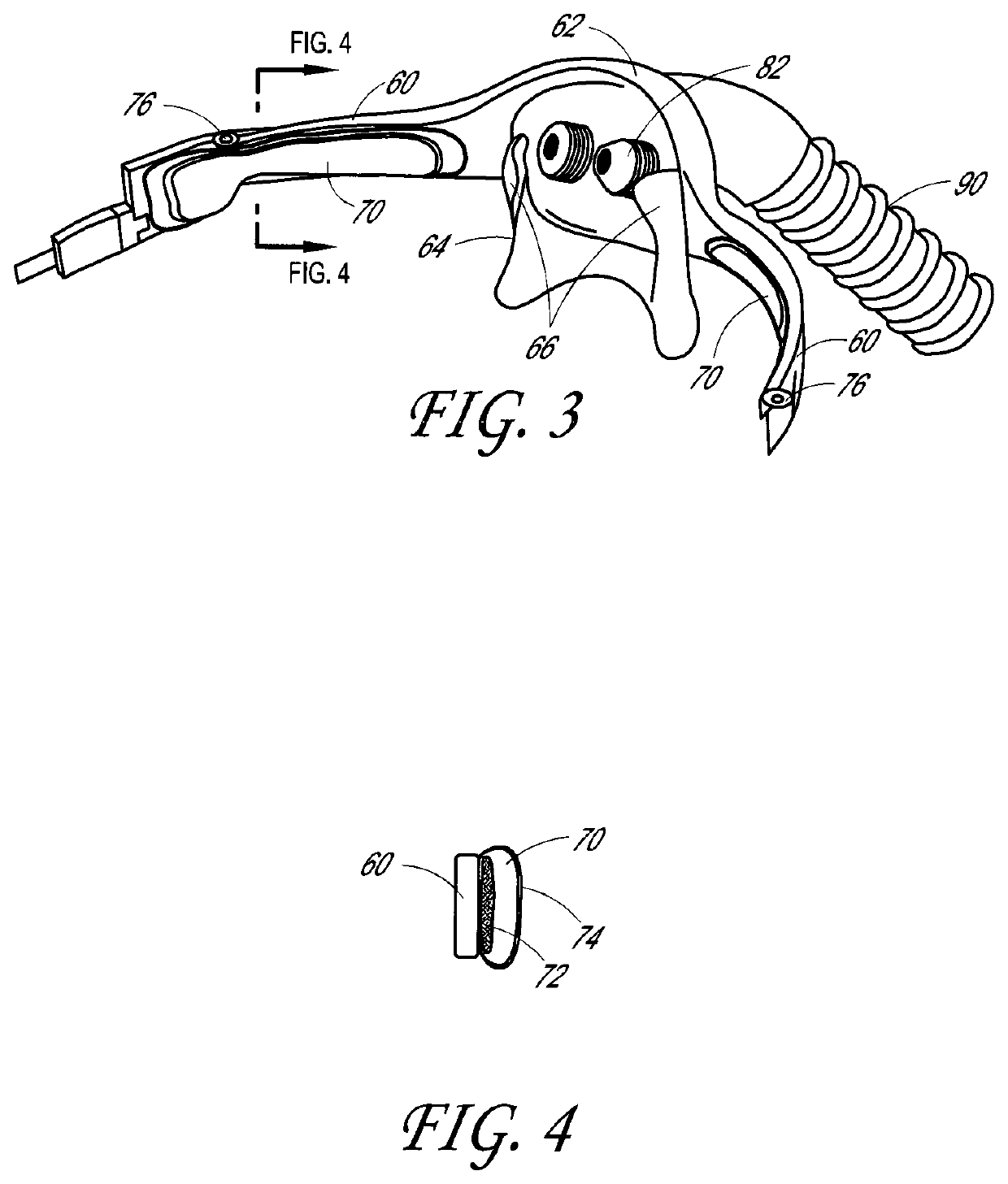Nasal interfaces for respiratory therapy
a technology of nasal interfaces and nasal prongs, which is applied in the field of nasal interfaces, can solve the problems that the design of nasal prongs using unsealed nasal prongs can generate significant noise, and achieve the effect of reducing draft or nois
- Summary
- Abstract
- Description
- Claims
- Application Information
AI Technical Summary
Benefits of technology
Problems solved by technology
Method used
Image
Examples
Embodiment Construction
[0072]FIGS. 1-47 illustrate preferred patient interfaces in the form of nasal interfaces or nasal masks that may be useful in various forms of respiratory therapy. Some embodiments include features that enhance or provide lateral stability of the interface to inhibit or prevent the cannula prongs or other nasal elements from being dislodged from the nares during movement. At least some of the embodiments provide multiple facial contact points or areas that aid the stability of the nasal interface on the user's face. These contact points or areas preferably are located in the general areas of the user's cheeks and / or upper lip. In embodiments that provide only one or two contact points or areas, it can be preferable that the contacting structures have a surface area large enough to spread the load over a region of the user's cheeks or other portion of the face, rather than creating a point load which could be uncomfortable and / or unstable. Preferably, the embodiments of the patient i...
PUM
 Login to View More
Login to View More Abstract
Description
Claims
Application Information
 Login to View More
Login to View More - R&D
- Intellectual Property
- Life Sciences
- Materials
- Tech Scout
- Unparalleled Data Quality
- Higher Quality Content
- 60% Fewer Hallucinations
Browse by: Latest US Patents, China's latest patents, Technical Efficacy Thesaurus, Application Domain, Technology Topic, Popular Technical Reports.
© 2025 PatSnap. All rights reserved.Legal|Privacy policy|Modern Slavery Act Transparency Statement|Sitemap|About US| Contact US: help@patsnap.com



